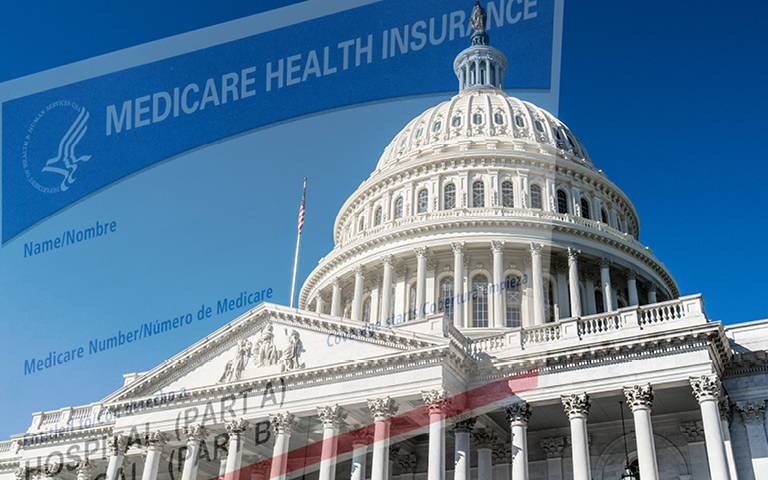At the risk of sounding like a broken record, let’s talk about one of the biggest issues the practice of radiology is facing in 2024: Medicare reimbursements and our battle for relief in Congress. The annual Medicare rulemaking cycle in 2023 culminated in further reduction of payments to specialists to bolster payments to primary care providers. This was not the result of any significant reevaluation of radiology-specific services but instead, once again, a result of budget neutrality forcing redistribution of money toward primary care services secondary to an increase in billable total relative value units (RVUs) for such providers.
This is a theme that is unlikely to go away without legislative intervention loosening or removing the constraints of budget neutrality. At the time of this writing, Congress went into recess and failed to address this persistent issue before the start of the 2024 payment period. Hopefully Congress will act early in the new year to patch this payment cut.
Medical specialty societies will lobby Congress heavily to fix this issue as soon as possible, and ACR members should be on the lookout for calls to action encouraging your state’s federal representatives to support a fix.
Although there is nothing to jump for joy about in the 2024 Medicare fee schedules, the lack of surprises was a relief.
Continued reduction in payments to our specialty is exacerbating a crisis we are all facing with workforce shortages. Addressing the root causes of these shortages, as well as potential solutions, is at the highest priority inside numerous commissions within the ACR.
One solution the ACR championed for decades was the implementation of Appropriateness Criteria® for ordering advanced imaging studies in the hopes of reducing the burden on radiologists struggling with an increasing reading volume. However, Medicare finalized an indefinite suspension of this program in its current form as mandated by the Protecting Access to Medicare Act of 2014. The ACR is working with stakeholders on what can be done to such a program in the hopes of making it operational.
There is also good news as we come into 2024. A silver lining for patients suffering from Alzheimer's disease was finalized at the end of 2023. Medicare ended its previous National Coverage Determination (NCD) of coverage with evidence development (CED) for PET beta-amyloid imaging. Medicare coverage for this imaging can now be made by the Medicare Administrator Contractors (MACs), potentially increasing access to this vital technology.
Another positive step for radiology came in the Physician Fee Schedule. Medicare agreed to pay for a professional service component for noninvasive estimate of coronary fractional flow reserve derived from augmentative software analysis of the data set from a coronary computed tomography angiography. This is potentially a landmark decision by the agency acknowledging clinician work in incorporating results of augmented software into the overall analysis of a diagnostic study. This may have big implications as the profession sees more and more automation and augmentation software brought to the market.
One potential solution to workforce challenges faced by many medical specialties is Medicare’s decision to extend through the end of 2024 direct supervision via two-way audio/video communications technology, subject to state regulations. One application of this ruling for radiologists is the virtual supervision of imaging contrast agents. CMS decided not to make this decision permanent at this time, only extending it through 2024 as it sought further feedback and data on potential harm of such a policy.
In the category of processes that must be watched carefully is Medicare’s willingness to delay creating rules around acquisition of new physician practice expense data for calculation of indirect expense inside the physician fee schedule.
We are also keeping our eye on a delay in updating Medicare Economic Index (MEI) data pending finalization of survey responses the AMA is collecting. This survey is active, and many radiology groups, practices and departments have likely received it. The ACR highly recommends that groups, practices and departments engage financial experts inside their entities to provide accurate data that reflects the actual costs of providing radiological services. At the time of this writing, the AMA had sent surveys to hundreds of radiology practices across a broad spectrum of practice types yet had received only seven responses from our specialty. How can Medicare possibly understand our costs with so few responses?
As a reminder, at least one bill floated in Congress would adjust payments to the Medicare Physician Fee Schedule, according to MEI calculations, meaning the results of this survey could find their way into payment policy.
Although there is nothing to jump for joy about in the 2024 Medicare fee schedules, the lack of surprises was a relief. Regardless, the trends continue to be bad for payments to radiologists, mainly secondary to the structural flaw of budget neutrality ignoring severe market forces of inflation.
This must be fixed, and that remedy is accomplished only through traditional boots-on-the-ground, grassroots lobbying, with all of us speaking directly with our government representatives — and an assist from the ACR with education and communication.


